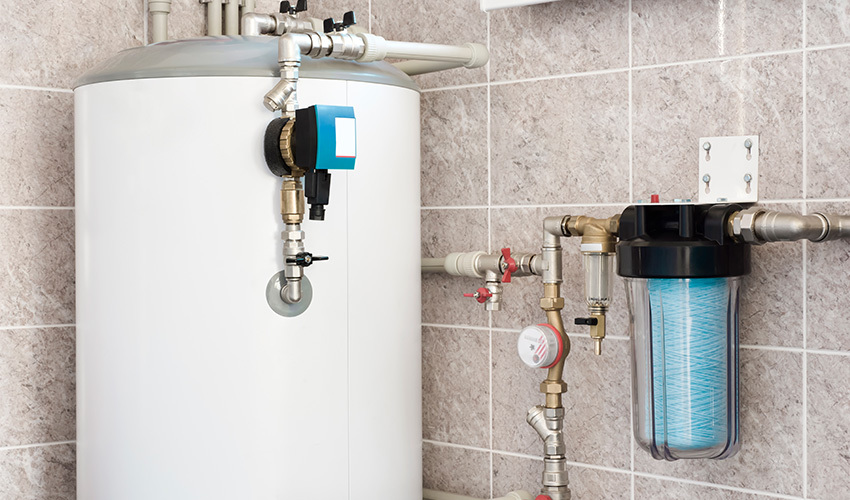Clean drinking water is essential for everyday health; it is used for brushing your teeth, showering, cooking, and ensuring that your home is well-kept.
Unfortunately, millions of Americans are left without clean drinking water due to the contamination of water sources. There may be high levels of chlorine, impurities, and other chemicals in your water without you even realizing it.
For those with well water, installing a well water filtration system is crucial for avoiding contaminants, such as soil and other contaminants like sulfur, from polluting your water and causing serious issues around your entire home, including foul smells and illness.
Installing a water filtration system in your home is the best way to maintain your peace of mind in knowing that your water is safe for your family and does not contain any toxins or impurities.
What Does a Whole Well Water Filtration System Do?
The purpose of a whole well water filtration system is to ensure that your entire home has clean drinking water available at all times. This includes water coming into your home from any faucet — not just the faucets in your kitchen or bathrooms.

The filtration system operates through a whole-house water filter known as a Point-of-Entry filtration system or POE. Essentially, this is a filter installed on the main water line before the water has entered the home. Water filters through this system, becoming clean to use, and then is circulated inside your home to all water systems, including toilets, showers, faucets, etc.
Installing a whole well water filtration system is the best option for any well water system: it ensures your entire home is provided with clean and safe water.
How Does the Filtration Process Work?
Whole home water filtration is a complex process with many steps to ensure that as many impurities and contaminants are removed as possible.
Step 1 – Pre-Filtration
When water enters pre-filtration, it enters into a 5-micron sediment filter. Here, large amounts of sediment are removed, including particles such as sand, soil, rust, and silt. This sediment filter helps increase the longevity of your system by disallowing harmful contaminants and debris from entering your home and causing wear on your plumbing and drains. Ideally, you will get 1,000,000 gallons of water filtered through this system before a replacement is needed.
Step 2 – Mineral Filtration
After the water exits the sediment filter, it flows into a mineral filtration system. While the water is in this system, harmful minerals such as chlorines, heavy bacteria, heavy metals, and other microbes are removed.
Sometimes KDF media will be put in the carbon filter to further assist the carbon filter in destroying harmful bacteria and pathogens.
Stage 3 – Activated Carbon Filtration
Upon being rid of sediment and other debris, water enters through an activated carbon filter, where it is further cleansed of impurities. The carbon filter absorbs any leftover impurities through tiny pores that act like a sponge, leaving water almost ready for use.
Stage 4 – UV Purification
This is the final stage of filtration and is often seen as a way of polishing off your water before it enters your home. In this process, 99.9% of the remaining bacteria are killed, and your water is ready for everyday use.
What Contaminants Does the Water Filtration Process Remove?
The water filtration process removes all of the following contaminants:
- Heavy Metals
- Rust
- Sediment
- Herbicides
- Harmful Bacteria
- Nitrates
- Organic contaminants
- Iron
- Pesticides

Types of Filters
KDF Filter
A filter that uses a process of oxidation-reduction to remove impurities in water. This is done through a redox reaction process that replaces dangerous components such as iron, chlorine, and sulfide with safe components.
A KDF filter works to control microorganisms in a couple of ways:
- Microorganisms are destroyed through a redox reaction, which entails an exchange of electrons, leading to the creation of an electrolytic field.
- Microorganisms lose their ability to function through the catalyzation of radicals and peroxides.
Carbon Filters
These filters are typically used to lower the amount of chlorine in your water as well as other harmful compounds such as pesticides and organic compounds. Typically, carbon filters are more common for city water.
UV Purifiers
A UV filter treats the water that filters through it with ultraviolet light. This process ultimately damages the DNA of pathogens, making them incapable of replicating.
Air Injection Filters
Known as backwashing filters, these filters send water back into an air injection/oxidizing filter to reduce elements such as magnesium, iron, and sulfur.
Care and Upkeep
Once you have a well water filtration system, upkeep is essential. Depending on the type of air filtration system you invest in, the air filters will need to be replaced. Contact a professional for any questions you may have or to get your air filtration installed as soon as possible.






